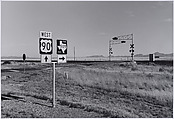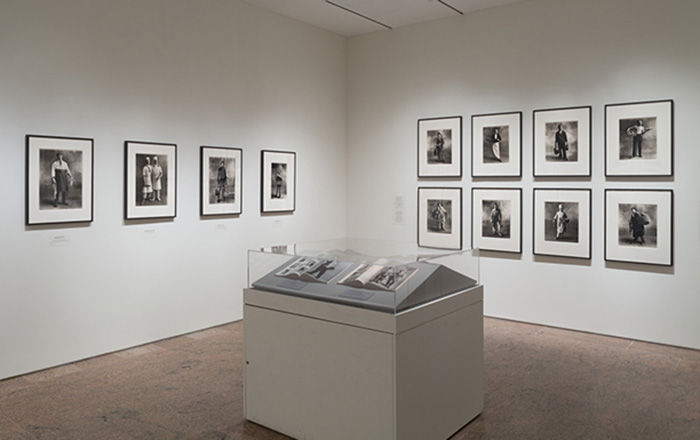Southern Pacific Transportation Co. and Amtrak's Sunset Limited, Railroad Crossing, Jefferson Davis County, Texas
Lothar Baumgarten German
Not on view
Baumgarten works primarily in photography, film, and installation, and his primary subject is the legacy of the historical encounter between the colonizers of the Americas and the indigenous peoples who inhabited the continent before them. A student of Joseph Beuys at the Kunstakademie Düsseldorf and the son of an anthropologist, he is perhaps best known for his magisterial 1993 exhibition at New York’s Guggenheim Museum, in which he ringed the inner curves of its rotunda with the printed names of Native American tribes.
In 1989, Baumgarten turned his attention to the vast continental railway system of the United States that enabled the settlement of the West. Traveling by train and often staying on reservations, the artist photographed the visible traces of the original 19th century routes as well as its present-day condition. The resulting publication, Carbon, is widely considered one of the most important and beautiful photographic books of the late 20th century, and its elementary title evokes that substance without which neither train nor track could exist, and which is also used to accurately date the past.
This past—that of the native peoples expropriated from their land and not shown physically in the images—is signaled in many of the photographs published in Carbon: in the views of a beast of burden watching a procession of truck flatbeds, or the barbed wire fence of a power station, or a flock of cattle dotting a snowy plain. Yet it is a perspective without cant or condemnation. Baumgarten casts an equanimous eye from a foreigner’s vantage point on America and the energies that created it, a tally both anthropological and poetic of what was gained and lost.
This image cannot be enlarged, viewed at full screen, or downloaded.


